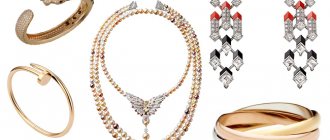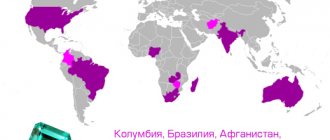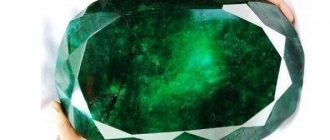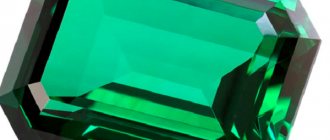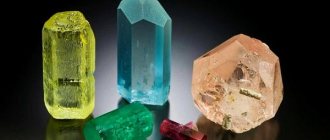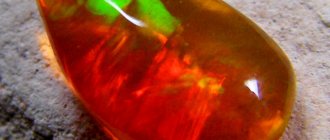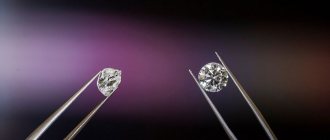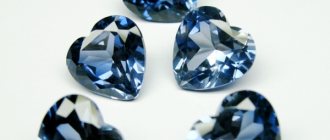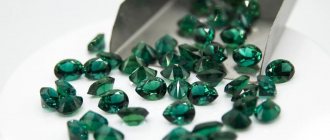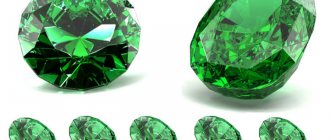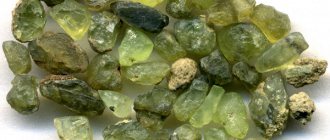The idea that hydrothermal emeralds are some kind of hyped fake made from rhinestones or glass is completely wrong. Modern technologies have made nanocrystals almost perfect.
Hydrothermal stones, created by human hands, act as analogues of real precious gems. Scientists grow stones in special laboratories that do not differ in external characteristics from natural ones.
The advantages of nano-minerals are their similarity to natural stones and their affordable price.
In addition, it is possible to create hydrothermal rocks of any size.
DIFFERENCES OF NANO EMERALDS
Nano-emerald is a piece of jewelry that accurately replicates natural emerald.
- The prefix “nano” initially showed that the original value was reduced by
- a billion times. Now “nano” refers to new technologies.
- Nanoemerald has become a new achievement of science, capable of perfectly reproducing an emerald.
- Sapphires and emeralds are expensive gems, which is why hydrothermal gems are often used in the jewelry industry recently.
Nano-minerals are practically no different from natural emeralds, but there are still small differences:
- hydrothermal green beryl contains tubular cavities that are visible under a microscope;
- Iron oxide visually appears as brown dots.
What are nano emeralds
Hydrothermal emeralds are artificially grown analogues of real emeralds.
- Although nano-emerald is artificially created, this does not mean that hydrothermal gems can be called fake.
- Artificially grown stones are NOT called fake because they are cultivated from components left over from the processing of natural emeralds.
- Hydrothermal minerals have clear cuts on the crystals and clear color, and the transparency is due to the absence of foreign impurities.
History of artificial cultivation
Many scientists have tried to reproduce copies of precious minerals from various materials.
For a long time, experiments were carried out to create beryllium silicates. As a result, scientists were able to obtain the smallest crystals:
- In 1891, Auguste Verneuil of France created a synthetic ruby.
- The first synthetic emerald was also obtained by the French Perret and Hautefel.
- In 1911 in Germany the method was improved.
- Until the 60s of the 20th century, constant developments were carried out in secret to create an analogue of real green emerald.
- In the 60-80s of the XX century in the Soviet Union, synthetic stones framed in gold were very popular.
- Nowadays, artificial emeralds from Thailand are very popular, where products are made from gold and silver by hand. Thanks to low import duties on minerals, high-quality jewelry is cheaper in Thailand.
We recommend: Symbolism of AQUAMARINE STONE
Technological processes changed slightly, but new equipment appeared that made it possible to control the process and create stones of various sizes.
The technology for growing nano-emeralds involves using water and high temperature.
Advantages and disadvantages
Nano-stones are practically no different from their natural counterparts and even have some advantages:
| DURABILITY |
|
| CRYSTAL TRANSPARENCY |
|
| UNIFORM STRUCTURE |
|
| UV RESISTANCE |
|
| INCREASED IMPACT RESISTANCE |
|
| ANY SIZES AND SHADES |
|
Nano-emerald has almost ideal properties and has only 2 drawbacks.
- An artificially grown stone, unlike the original, necessarily contains gaseous bubbles.
- Some connoisseurs of natural stones argue that grown emerald does not have the same magic and energy as the natural one, which nature has created for thousands of years.
Process Features
It is advisable to obtain a real emerald, but grown artificially, using the hydrothermal method. The difficulties of home production lie in equipment that is not easy to find on the market. To do this, you need an autoclave with the ability to heat up to 500-700 ℃ at 3000 atmospheres, since maintaining a high temperature is a prerequisite for crystal growth. Autoclaves are not suitable for canning, as their limit is -200 degrees.
Raw materials for production - fragments, natural beryl powder, beryl seeds - are sold by companies that mine this mineral. The dye is chromium hydrochloride, the mineralizers are ammonium and sodium chloride.
The production technology is as follows:
- filling the lower part of the furnace with beryl powder (charge);
- adding water, mineralizers, dye;
- installation of seeds - beryl plates;
- temperature setting - heating the bottom, cooling the top.
The movement of hydrothermal solution is subject to the laws of physics: a hot solution containing dissolved elements rises and cools. At the seed, the substances precipitate into the solid phase, and the liquid goes down for the next portion of the components. In 10 days the crystal grows by 3 mm, and after a month it reaches a centimeter length.
Growing emerald is a labor-intensive, difficult process that requires special knowledge, special equipment, and connections with manufacturers of raw materials and reagents. It’s easier to buy synthetic mineral blanks from an industrial manufacturer, and order the cut at a jewelry store. However, at home you can start making emerald imitations that are of collectible interest.
CRYSTAL GROWING TECHNOLOGY
Hydrothermal technology is a laboratory-based process that replaces the geothermal processes that form emeralds in nature.
Hydrothermal emerald has the same formula and crystal structure as natural emerald.
There is an opinion that minerals can be grown at home, but this is not true. The process of growing crystals is complex and requires the supervision of specialists.
Chromium gives green color
Emerald is a mineral of the beryl group, which contains chromium impurities.
In the laboratory, you can select the optimal amount of chromium to obtain a synthetic emerald of rich green color.
The green color saturation depends on the number of chromium atoms in the crystal lattice of the gem.
We recommend: LARIMAR - the legacy of Atlantis, the legend of the Dominican Republic
How are emeralds grown?
A hydrothermal emerald is created as follows:
- To obtain a high-quality and beautiful crystal, waste from the processing and cutting of natural minerals is used;
- Jewelry dust is additionally crushed and mixed with water;
- The resulting mixture, along with chromium and other components, is placed in a special autoclave, where it is exposed to reagents and temperatures;
- Then, on a special stand, as it cools, a small crystal grows.
It will take 4-5 weeks to get a large artificially grown emerald.
It will take tens of thousands of years for a natural gem to appear in nature.
Is natural sapphire different from synthetic sapphire?
As already mentioned, at first glance, even experienced craftsmen sometimes cannot tell which specimen they are dealing with. If a jewelry store or jewelry show has a good reputation, none of the sellers or event participants will talk about the synthetic stone being natural.
It can be difficult to convince ardent fans of natural sapphires that laboratory stones can be of much higher quality than real ones. First of all, this means the absence of impurities; the manufacturing process is constantly monitored by professionals. The crystal structure of hydrothermal sapphires is much cleaner; these stones have virtually no cracks or air bubbles.
Such high quality is the first sign that allows you to distinguish an artificial mineral from a natural one. For example, if the stone has a hue that is “suspiciously” clear in appearance, it is most likely a hydrothermal sapphire. Natural sapphires most often contain inclusions in the form of mineral substances visible to the naked eye and natural microcracks.
Only the buyer has the right to decide which type of mineral is best, but any type of gem can be liked, including those created by human hands.
WHAT ARE SUCH STONES NEEDED FOR?
The need to create artificial stones is determined by a number of reasons:
- Jewelry with natural stones is expensive: jewelry with hydrothermal emeralds is just as beautiful, but costs 70 times more.
- The processes of prospecting and mining of precious gems are labor-intensive and resource-intensive, while creating artificial stones in the laboratory is much simpler and cheaper.
- Natural resources are being depleted, and it is becoming more difficult to find deposits with new reserves of minerals.
- Artificially grown stones are used by jewelers of world fashion houses.
Magical and healing properties
Theoretically, artificially grown emerald crystals should have similar magical properties as natural ones. After all, a man-made mineral is created from similar components under the influence of similar processes.
Nano-emeralds are used for the same magical rituals as natural ones: for example, they disinfect water by placing the mineral in the liquid for 24 hours.
Medicinal qualities
These stones are also used for medicinal purposes.
For people
It is useful to have green gem jewelry:
- people suffering from heart disease,
- people susceptible to stress and respiratory problems.
For indoors
It is believed that if you store a green gem in your home, you can:
- protect yourself from bad energy;
- gain family well-being;
- get rid of attacks of anger;
- fill the house with love.
Green gems look good when set in rhodium-plated silver, platinum or white gold.
The frame emphasizes the beauty of emeralds, and the metal enhances the effect of the stone.
Can it be used as talismans?
Even an artificially grown gem has a certain energy.
Hydrothermal emeralds are used in the manufacture of talismans for the same reason as natural minerals: because raw materials from natural emeralds are used to create artificial gems.
We recommend: PRENIT - the modest charm of solar jade
Talismans made from green minerals help the owner in the following matters:
- will protect from damage with the evil eye;
- sailors will be protected from storms and storms;
- will organize your thoughts and calm you down.
Who is suitable according to Horoscope
The energy of crystals is not suitable for all zodiac signs:
- wearing hydrothermal jewelry is not recommended for SCORPIO;
- ARIES ensure success in business;
- TAURUS strengthens memory;
- GEMINI discover talents;
- CANCER and LIBRA help to find peace of mind;
- LIONS increase vital energy;
- CAPRICORN and SAGITTARIUS are relieved of mental anxieties, but these signs should not abuse the mineral;
- for PISCES and AQUARIUS it is a strong talisman that brings happiness and success.
Who is it suitable for?
The stone is most suitable for strong personalities. It enhances internal potential and contributes to the implementation of the most daring ideas. Emerald does not like deceivers, scammers and people prone to hysterics. It prevents negative energy in every possible way.
Astrologers advise hot-tempered and nervous people to wear emerald jewelry. He will extinguish attacks of anger and frustration in time.
The stone is also recommended for those whose mood often changes. According to the zodiac sign, this is Cancer, but in any sign there are individuals who are distinguished by such changes in the psycho-emotional background. The green mineral stabilizes the state, gives peace and tranquility.
People whose professions involve documents and money, as well as large managers and businessmen, need the energy support of a crystal. Emerald will give you composure when making important decisions, direct your thoughts in the right direction, and sharpen your intuition.
HOW TO DETERMINE QUALITY
Scientists are able to grow artificial emeralds with properties identical to natural nuggets. In order not to confuse a hydrothermal emerald with an ordinary fake, it is worth paying attention to some points.
Signs and properties of nano-emeralds
You can distinguish an artificial mineral of hydrothermal and natural origin, in comparison with low-grade fakes, by the following properties:
| MINIATURE |
|
| BUBBILITY |
|
| STRENGTH |
|
| SIMPLICITY OF FORMS |
|
| TUBULAR INCLUSIONS |
|
| HUE |
|
The qualities of natural emeralds are similar to hydrothermal doublets, which is achieved by using first-class raw materials and the correct application of nanotechnology.
History of invention
For the first time, the French scientist Auguste Victor Louis Verneuil thought about the possibility of creating artificial precious stones. His journey of invention began in 1886 and lasted 16 long years. Only after this time did he announce the discovery and give comprehensive information about the results of the long experiment. He said that using high temperatures and the drop precipitation method, it is possible to obtain synthesized minerals, in particular blue corundum. Subsequently, this method became known as the Verneuil method. Afterwards, other scientists improved this method and created their own based on it. But for the first time, the discovered method is still successfully used in the chemical industry.
We start with a visual inspection
Dipping an emerald into acid to test it is useless. Both natural stone and synthetics do not change color. Also, both crystals react equally to high temperatures. If it is above 700 degrees, the crystals will become discolored. But such testing methods are only possible in laboratories. Below we will teach you how to check the authenticity of jewelry yourself.
The synthesis of emeralds began in the second half of the 19th century. Artificial green crystals were grown in laboratories in Germany. The production is based on water, high and low temperatures, so the method itself and the resulting crystals are called hydrothermal (HT). The first copies left much to be desired.
Gradually the method was improved. And since 1935, Igmerald appeared. The word includes the abbreviation of the organization that grew the emerald (German) and part of the medieval name of the stone.
In terms of durability, artificial emeralds are superior to those created by nature. And upon visual inspection they have much fewer defects. It is impossible to notice microscopic cracks in them with the naked eye. Accordingly, veins and inclusions are much more often found in a natural mineral. Another obvious advantage of GT crystals is that they do not deteriorate under the sun.
Prices
Another feature that sets hydrothermal emerald apart is its price. Of course, it is much lower than a stone of the same size grown by nature.
The average price for a cut stone is $30-50 per carat. In some cases, the cost may be higher - for example, for stones with impeccable clarity and excellent cutting.
Advantages and disadvantages
Artificially grown emerald is more durable. This is explained by the absence of microcracks on the surface, characteristic of natural crystals. The stone is resistant to ultraviolet radiation. Even after a long stay in the scorching sun, the color does not change.
The analogue has almost all the properties. Affordable price allows ordinary people to enjoy the beauty of the majestic gem.
There is another undeniable advantage of synthetic crystals. This is the absence of blood spilled because of them, because it is no secret that jewelry became the cause of quarrels, robberies and even wars. And the grown gem is pure and there is no trace of negativity trailing behind it.
The only disadvantage of artificial stone can be considered its low quality. This may be due to violation of production conditions or non-compliance with cutting rules.
Use in jewelry
Autoclave-grown emeralds are in great demand. Jewelers are happy to take them for decorations. Often such stones in products are successfully complemented by others, for example, rock crystal or cubic zirconia. Crystals are usually set in silver and gold.
Jewelry with artificial emeralds is much cheaper than with natural minerals. But some unscrupulous sellers pass them off as real stones and set a deliberately inflated price. You need to check the certificate and carefully inspect the product. Sometimes it is better to do an examination. The similarity of high-quality analogs with natural emeralds is so great that even in laboratories it is not always possible to determine the imitation.
In jewelry, hydrothermal minerals are as popular as natural ones. They are affordable, differ little in beauty, and sometimes even surpass natural ones in color quality and transparency.
As with real crystals, a special emerald cut is used for hydrothermal crystals. It allows the color to reveal and protects against chipping. Cabochons are sometimes found. For real emeralds, this cut is done for irregularly shaped, unevenly colored specimens. And synthetic stones are cut into cabochons to enhance the resemblance to natural processed crystals.
Hydrothermal emeralds are a serious achievement of scientists. Technologies are constantly improving, and jewelry is becoming more attractive and cheaper.
Place of Birth
Tunja
Good emeralds are rare, most of them are found in the Colombian deposits of Tunja (the deposit was discovered in 1555) and Muso (known since 1537), in New Granada, Zambia, Brazil and Egypt. Emeralds of lower quality are found in Habachtal, in Salzburg (Austria), in the Mourne mountains (Ireland), on Lake Mjosen (Norway) and in some other places.
Emeralds are also mined in Russia, USA, Canada, Australia, Spain, France, Switzerland, Italy, Germany, Bulgaria, Kazakhstan, Pakistan, Afghanistan, India, China, Cambodia, Egypt, Ethiopia, South Africa, Somalia, Nigeria, Namibia, Tanzania, Zimbabwe, Mozambique and Madagascar.
Colombia
Nowadays, from 50 to 95% of all emerald production comes from Colombia (the exact percentage varies greatly from year to year in different directions). Between 2000 and 2010, emerald production in Colombia increased by 78%. In addition to regular emeralds, Colombia also produces trapice emerald, which is distinguished by the formation of crystals in the shape of a wheel with spokes.
Zambia
Zambian emeralds are of higher quality than Colombian ones. The largest emerald deposit in Zambia is the Kagem mine, which is located 45 km southeast of the city of Kitwe. In 2004, about 20% of all emeralds mined that year were mined here, making Zambia the second “emerald” country after Colombia. In the first 6 months of 2011, 3.74 tons of emeralds were mined in the Kagem mines.
Brazil
Stones mined in Brazil are lighter and much purer than Colombian ones. It was also here that the world's largest emerald was found at 57,500 carats (11.5 kg), named Teodora and approximately valued at $1.15 million.
Egypt
In Egypt, emeralds are mined in mines near El Quseir and Mount Zabara (this deposit, according to hieroglyphic monuments found there, was mined already in 1650 BC). Deposits near Aswan, 50-60 km from the Red Sea coast, were developed under Pharaoh Sesostris III about 37 centuries ago. Slave miners dug shafts up to 200 meters deep in strong shale, which could accommodate up to 400 people at a time. It was believed that emerald was afraid of light, so the work was carried out in complete darkness. On the surface, the emerald-bearing rock was split into pieces and smeared with olive oil in order to distinguish the precious crystals.
Areas of application
Emerald crystals
The main use of emeralds is in the production of jewelry.
Stones of a deep green tone are most valued; even if there are inclusions, they are preferred to be pale colored, even almost transparent.
To process transparent emeralds, the following types of cuts are used: step, rectangular “emerald” or “square”, less often diamond. Translucent stones are processed in the form of cabochons.
Dichroism must be taken into account.
It should be noted that only a very small part of emeralds is processed in the countries where they are mined. The highest quality emeralds are processed in Idar-Oberstein (Germany), Ramat Gan (Israel), London, Geneva and New York. Medium and low quality stones, which make up the bulk of mined minerals and are suitable for making cabochons, are processed in India. They are often combined with diamonds in jewelry.
The luster of emerald is usually vitreous. The physical properties, especially density, light and birefringence, as well as pleochroism, vary somewhat among emeralds from different deposits.
The quality of jewelry stones is assessed in accordance with international requirements. The most valuable are bright green crystals with minor inclusions. Bright color is the main factor influencing the price.
Emerald inserts adorn many pieces of jewelry stored in museums or state treasuries.
Emeralds are also used to create solid-state lasers. Synthetic emeralds are used in quantum electronics.
Notes
- R. E. Kane, R. T. Liddicoat (]r.). The Biron hydrothermal synthetic emerald // GEMS & GEMOLOGY, Fall, 1985, p. 156-170.
- K. Schmetzer, L. Kiefert, H.-Jür. Bernhardt, Z. Beili. Characterization of Chinese hydrothermal synthetic emerald. // GEMS & GEMOLOGY, Winter, 1997, p. 276-291.
- Flanigen EM, Mumbach NR Hydrothermal process for growing crystals having the structure of beryl in an acid halide medium. // United States Patent No. 3,567,643; issued March 2, 1971.
- K. Schmetzer, D. Schwarz, H.-J. Bernhardt, T. Hager. A new type of Tairus hydrothermally-grown synthetic emerald, colored by vanadium and copper. // J. Gemm., 2006, 30, 1/2, p.59-74.
Notes
- R. E. Kane, R. T. Liddicoat (]r.). The Biron hydrothermal synthetic emerald // GEMS & GEMOLOGY, Fall, 1985, p. 156-170.
- K. Schmetzer, L. Kiefert, H.-Jür. Bernhardt, Z. Beili. Characterization of Chinese hydrothermal synthetic emerald. // GEMS & GEMOLOGY, Winter, 1997, p. 276-291.
- Flanigen EM, Mumbach NR Hydrothermal process for growing crystals having the structure of beryl in an acid halide medium. // United States Patent No. 3,567,643; issued March 2, 1971.
- K. Schmetzer, D. Schwarz, H.-J. Bernhardt, T. Hager. A new type of Tairus hydrothermally-grown synthetic emerald, colored by vanadium and copper. // J. Gemm., 2006, 30, 1/2, p.59-74.
Precautionary measures
Unfortunately, in our time, some “masters” manage to make a fake of a fake. That is, to make not just a fake emerald, but a fake hydrothermal emerald, which is completely out of the question. Therefore, you need to know some of the features of laboratory stone so as not to buy a piece of glass instead.
Hydrothermal emerald is stronger than glass, which is why it is so difficult to process. You can't just scratch it. Artificial emerald also has a deep color, sometimes with a blue tint.
Ask sellers for quality certificates, do not trust sellers without documents and too low prices. Focus not only on the type of stone itself, but also on your own feelings - sometimes intuition can tell you a lot.
Real experience of growing artificial emerald at home
https://youtube.com/watch?v=_L3esAkZ9Hc
Medicinal properties
It is believed that emerald stabilizes blood pressure, relieves headaches and joint pain, treats stomach diseases, inflammation of the bladder, and has antibacterial properties (if you put it in a glass of raw water, you can drink it without boiling). In ancient times, it was believed that the stone helped get rid of night blindness, eyesores, and epilepsy. Modern lithotherapists claim that the owner of an emerald is not at risk of nightmares, insomnia, unreasonable fears and increased fatigue.
Magic properties
The main task of the emerald is to fight the bad inclinations of its owner: deceit, a tendency to scam, infidelity in love.
If the owner of the stone does not have bad inclinations, the emerald brings him health and good luck, otherwise it can send disasters to the person.
This gem is able to dispel any negative energy, cleanse a person’s biofield and his home from negativity. Emerald protects the family hearth: it preserves marital ties, maintains peace and harmony in the family, and promotes procreation.
This stone helps people with developed intuition to get into contact with the souls of the dead, with creatures from the subtle world, and gives the ability to decipher signals sent to Earth by the forces of the Universe. Emerald is a very delicate stone. He does not tolerate aggression and rudeness. If you wear the stone constantly for 2-3 months, a person can correct these negative character traits.
Astrologers claim that the gem helps nervous, sensitive people avoid stress and expose deceptions and intrigues. It is very suitable for Leo, Libra and Aquarius. Emerald is strictly contraindicated for Pisces, Capricorns and Scorpios. Other signs can wear it.
Problems with sample analysis
To check the sample, you need a color filter and a magnifying glass. But the following is taken into account:
- In ultraviolet light it is impossible to distinguish a real emerald. This way, only imitation or glass can be recognized, since natural stone and synthetics acquire the same brown-red hue under the lamp.
- Under a magnifying glass, they evaluate how many inclusions there are in a gem and what they are. By carefully researching, you can even figure out the “homeland” of the pebble. But natural formations can easily be confused with air bubbles in glass or doublets containing it.
- If the stone is in a frame, it is viewed from a distance of a couple of meters - the real one differs from the fake in the absence of shimmer or reflections, reminiscent of noble dark green velvet.
- Visual analysis sometimes fails. For example, the most expensive Colombian gems are easily recognized by their bluish tint - an attribute of specimens of synthetic origin.
It is not surprising that authenticity is guaranteed only by experts using special tools, for example, a refractometer.
Hydrothermal rubies
Mark Gooden created the first hydrothermal ruby by melting a natural stone. Since 1892, they have been grown using the Verneuil method.
Red gems, like emeralds, are obtained using silica, alumina and chromium. They are also made from corundum, similar to sapphires.
Artificial ruby has a number of advantages over natural ruby:
- brighter and more saturated color;
- does not fade in the sun;
- has no defects in form and structure;
- you can get any stone, even an imitation of the famous “cat’s eye”.
Externally, nanoruby is indistinguishable from the real thing and has practically the same chemical and physical characteristics. Natural mineral weighs a little more and may have cracks and chips that can only be discerned with the help of special equipment. These red gems are described in detail in the article “Ruby Stone: Color, Properties and Who is Suitable for It.”
Dark ones are rare
Another sure sign of a GT emerald is the shade of blue in the overall deep color. When purchasing, a certificate for the jewelry will give you 50% confidence in authenticity. A reputable store may even have the results of examinations. Therefore, ask for accompanying documents for jewelry when purchasing it.
Natural emerald is usually colored lighter towards the sharp end than at the base, but of course this is not visible in the products. In general, it is difficult to distinguish synthetic frames from real mineral. Therefore, in the store, be guided by the price. Large natural stone is expensive. And if the ring is sold at a good discount, this is a reason to think about it. It is possible that, under the guise of a genuine mineral, they are trying to sell you a crystal grown in a laboratory.
We said above that a real emerald can be cloudy and does not look very attractive. Also remember that light-colored stones are more often transparent. It is not often possible to find dark colors, which is why the cost of such crystals is much higher. Keep this fact in mind when purchasing earrings or pendants in a store.
Notes
- R. E. Kane, R. T. Liddicoat (]r.). The Biron hydrothermal synthetic emerald // GEMS & GEMOLOGY, Fall, 1985, p. 156-170.
- K. Schmetzer, L. Kiefert, H.-Jür. Bernhardt, Z. Beili. Characterization of Chinese hydrothermal synthetic emerald. // GEMS & GEMOLOGY, Winter, 1997, p. 276-291.
- Flanigen EM, Mumbach NR Hydrothermal process for growing crystals having the structure of beryl in an acid halide medium. // United States Patent No. 3,567,643; issued March 2, 1971.
- K. Schmetzer, D. Schwarz, H.-J. Bernhardt, T. Hager. A new type of Tairus hydrothermally-grown synthetic emerald, colored by vanadium and copper. // J. Gemm., 2006, 30, 1/2, p.59-74.
Are there any similarities?
Hydrothermal emerald is quite similar to natural stone. So much so that sometimes even a professional jeweler finds it difficult to determine the origin of a gem.
But despite all the obvious similar qualities, there are still differences. This is something that cannot be explained or described using formulas, as if we are talking about a force absorbed over millions of years of formation. Natural emerald plays with its facets, shimmering in the sun's rays; hydrothermal crystals cannot compete with them in this.
History of alexandrite
The modern history of the mineral, as well as the acquisition of its name, began in 1834. Until this time, the stone was mentioned in the Indian epic Mahabharata. From deeper times, a legend has reached us that an amazing gem witnessed how Cain killed his brother Abel. Impressed by the cruel spectacle, the mineral began to turn blood red every evening.
In Russia, the first information about alexandrite was published by the Finnish mineralogist Noredenskiöld. The scientist led the study of the Ural Mountains, where a green mineral similar to emerald was discovered. Noticing that the stone was changing color, he handed it over to the jeweler Perovsky.
Perovsky, admired by the beauty of the gem, decided to give it to the future Emperor Alexander II as a gift when he came of age. The jeweler named it alexandrite in honor of the Russian Tsar.
The Silver Age poet Maximilian Voloshin, who was truly in love with the magical beauty of the stone, asked his friends to come to his grave with stones, not flowers. The Russian poetess N.A. also mentions alexandrite in her poems. Teffi, who lived in the 19th century.
The German artist F. Kruger, who painted a portrait of the Grand Duchess, mother of Alexander II Alexandra Feodorovna, depicted her in Russian folk dress and kokoshnik. He decorated a simple suit with a scattering of sparkling alexandrites (see photo), thereby emphasizing the status of the woman in the portrait.
The gem was first described in the ancient Indian epic and called “peacock eye”. After this, there is no mention of the stone until 1834, when it was first described by a Finnish mineralogist.
While working on sampling the rock, on April 17, 1834, he found a green, cloudy stone and considered it a not too pure emerald. In the evening, having decided to take a better look at the find, Nordenskiöld brought the mineral to the flame of a candle, the stone turned purple-red. On this day, the future heir to the Russian throne celebrated his coming of age.
In honor of Alexander II, the rare stone was named alexandrite.
According to the second version, alexandrite was found by a descendant of the stone-cutting dynasty, Yakov Kokovin, while mining emeralds on the Tokova River in the Urals. Struck by the variability of the color of the mineral, Kokovin sent a sample to St. Petersburg to Count Perovsky, who at that time headed the Department of Appanages.
All the rare gems mined in the Urals passed through his hands. At first, Perovsky gave the stone the name diaphanite, that is, bright, but then, deciding to use the opportunity to gain the favor of the monarch, Perovsky changed the name to alexandrite and hastened to present the stone to the future emperor.
During the years of the USSR, alexandrite was actively mined in the Urals, but they did not go on free sale, becoming the property of the state. Instead, artificially grown corundum with an admixture of vanadium was used, which looked very similar to the original.
The mineral is formed at certain temperatures and humidity levels in greisen and pegmatites through the chemical reaction of beryllium with chromium in the obligatory absence of ubiquitous silicon. Such conditions are very rare, because there are few deposits and mining sites.
